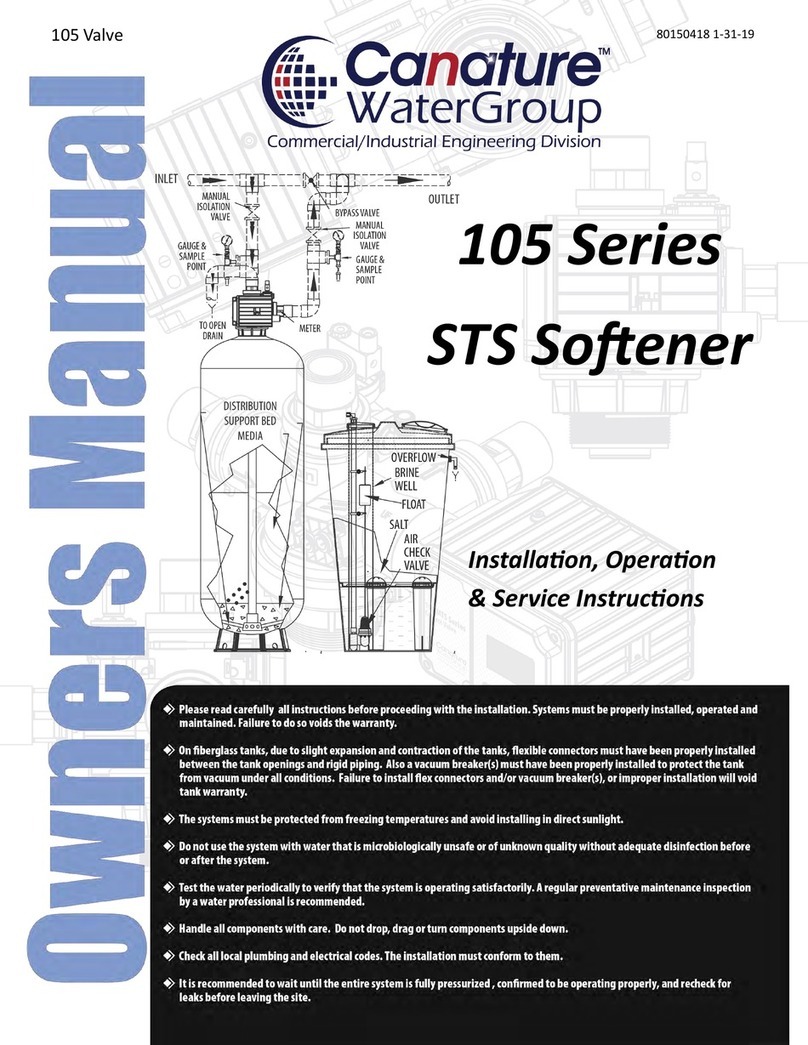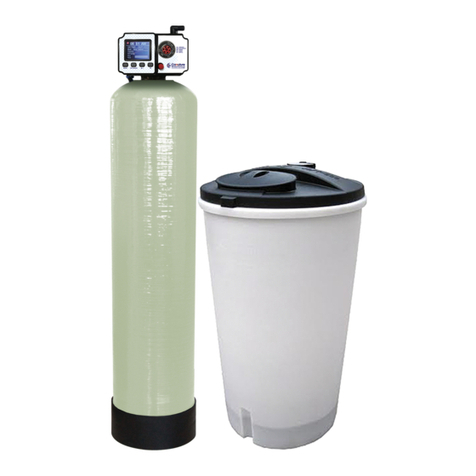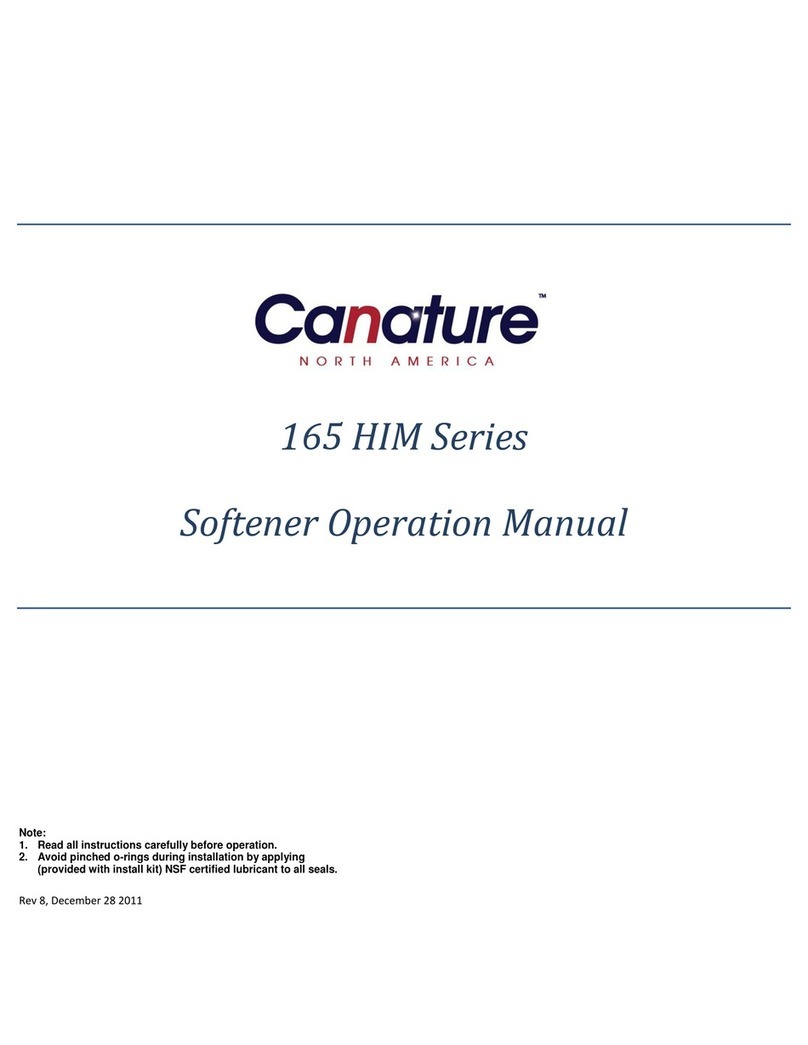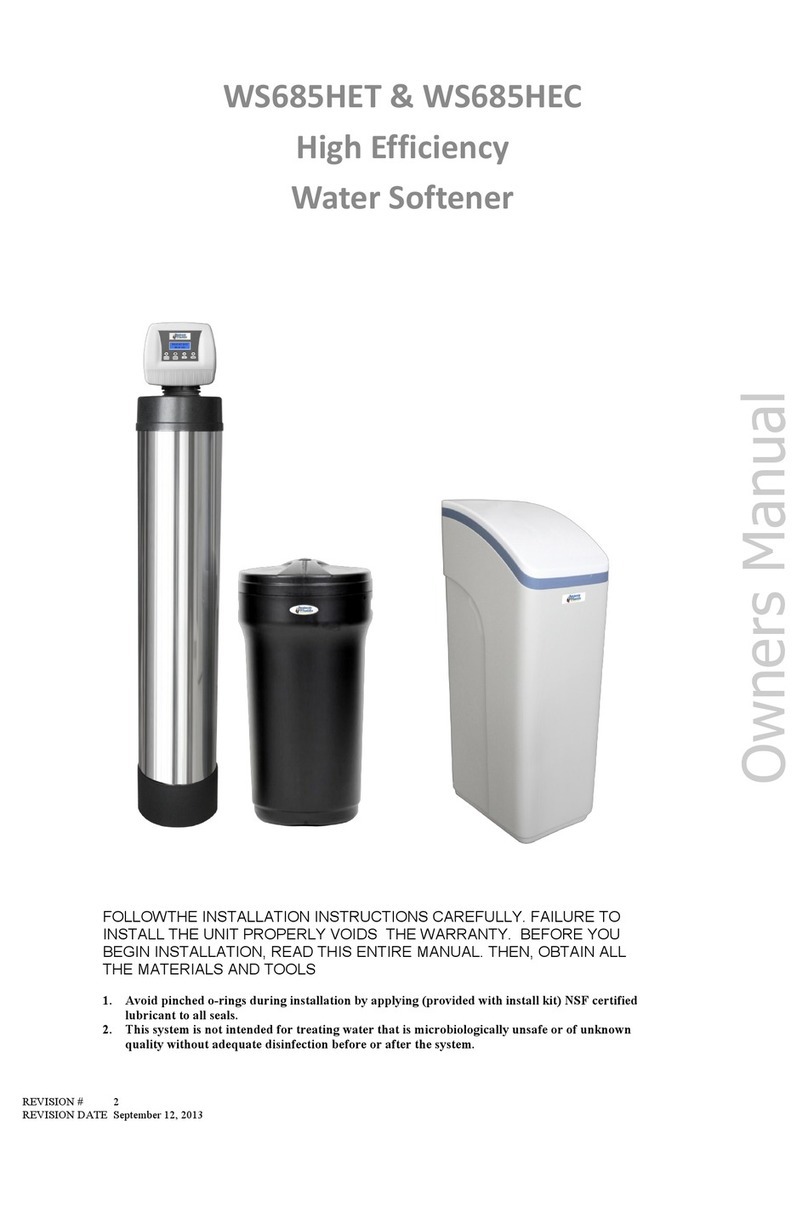4
Specifications
Before Starting Installation
Tools, Pipe, and Fittings, Other Materials
Pliers
Screwdriver
Teflon tape
Razor knife
Two adjustable wrenches
Additional tools may be required if modifi-
cation to home plumbing is required.
Plastic inlet and outlet fittings are included
with the softener. To maintain full valve
flow, 3/4” or 1” pipes to and from the sof-
tener fittings are recommended. You
should maintain the same, or larger, pipe
size as the water supply pipe, up to the
softener inlet and outlet.
Use copper, brass, or PEX pipe and fittings.
Some codes may also allow PVC plastic
pipe.
ALWAYS install the included bypass valve,
or 3 shut-off valves. Bypass valves let you
turn off water to the softener for repairs if
needed, but still have water in the house
pipes.
5/8” OD drain line is needed for the valve
drain. A 10’ length of hose is included.
with some models.
A length of 5/8” OD drain line tubing is
needed for the brine tank over flow fitting
(optional).
Nugget or pellet water softener salt is
needed to fill the cabinet or brine tank.
Water Temperature = Min 39°F / Max 100°F
Operating Pressure = Min 35 PSI / Max 125 PSI
Voltage = 110 volts standard
Units contain 8% Super Capacity Ion Exchange Resin
At the stated service flow rates, the pressure drop through
these devices will not exceed 15 psig.
Changing salt settings from factory setting may require
changing injector sizes to achieve stated capacities.
The manufacturer reserves the right to make product im-
provements which may deviate from the specifications and
descriptions stated herein, without obligation to change
previously manufactured products or to note the change.
How Your Water Conditioner Works
The principle behind water softening is simple chemistry. A water softener contains resin
beads which hold electrically charged ions. When hard water passes through the softener,
calcium and magnesium ions are attracted to the charged resin beads. It's the resulting re-
moval of calcium and magnesium ions that produces soft water.
This system is controlled with simple, user-friendly electronics displayed on a LCD screen.
The main page displays the current time and the remaining gallons in meter mode or the
remaining days in calendar clock mode.
































